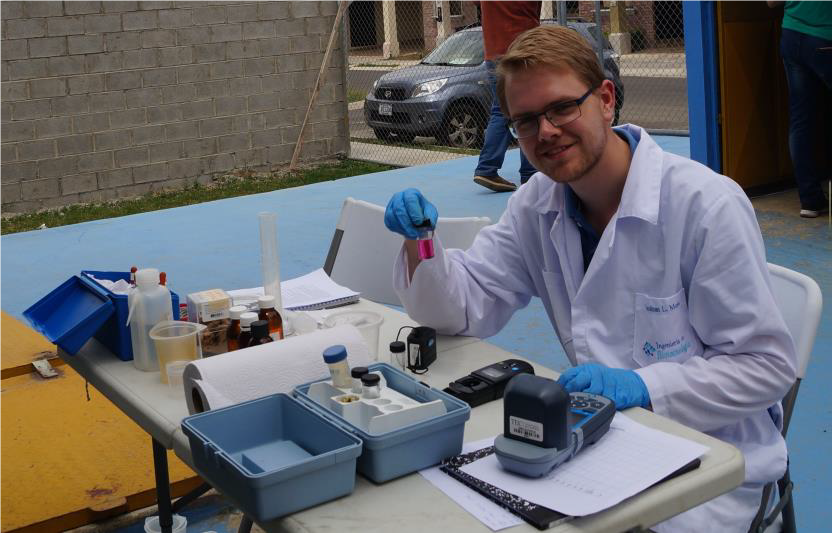Arsenic removal by GreensandPlus
Analysis and optimisation of La Rueda water treatment plant
In the 4th quarter of the 2017-2018 academic year I was presented with an unique opportunity to do my bachelor thesis in Costa Rica at TEC (Tecnológico de Costa Rica). In Costa Rica increased natural levels of arsenic can be found. As arsenic can cause serious health risks when exposed to it long-term, the WHO (World Health Organization) therefore has set a recommended limit of 10 μg/L. However, due to geological conditions, most places in Costa Rica exceed this limit.
Costa Rica’s water treatment plants currently use a filtration technique consisting of granular titanium oxide to remove arsenic without regeneration being required. The disadvantage however, is that this is quite expensive and needs to be specifically imported. My thesis focusses on the condominium of La Rueda, where of one of the two drinking water wells experiences elevated levels of arsenic. It currently utilizes GreensandPlus which in combination with iron chloride could remove arsenic from the groundwater more cost-effectively. Although this system was not initially designed for the removal of arsenic it could remove it effectively in theory, however recent periodic tests have shown that this is not the case in practice. Arsenic values were above the threshold and additionally both iron and manganese were close to their respective thresholds. Currently, iron chloride and sodium hypochlorite are added to the system to help remove the arsenic by flocculation in the filter. The objective was to find how a mixture of anthracite, GreensandPlus and gravel can work together in the best conceivable way by keeping the current system largely intact and thus providing a low-cost solution.
This was done by carrying out field work on three occasions. On the first occasion the flow rate of the system was adjusted to a third of its normal rate, which resulted in values for arsenic, iron and manganese that complied with local regulations. However, free chlorine levels were high. On the other two occasions the system was operating normally, and it resulted in arsenic values just above the limit. The difference between the two occasions was the amount of iron chloride added to the system. The most promising dosage seemed to be 11.3 mg/L as this resulted in both iron and manganese and their combined value to be mostly below their respective limits and free chlorine limits were also met.
It would be recommended to change the backwash frequency as well as the length to properly clean the filter as data suggest that the filter is clogged before the scheduled backwashing and that the effluent is not entirely clean yet. As the other operational well has very little arsenic, iron and manganese this water could be mixed to allow for safe operations. However, to ensure a futureproof system, several changes would have to be made. One of them would be to install a filter consisting of titanium dioxide after the current system such that it removes the remaining arsenic (this could be implemented short-term). A long term solution that might be more economical might be more desirable, but more research has to be carried out before a definitive solution can be made at this well and at others in similar conditions throughout the country.
On a final note, I would like to thank my supervisors Doris van Halem, Luuk Rietveld and Luis Romero for providing this opportunity and guiding me throughout this project and to Ricardo González for aiding me in the field tests and lab procedures. To me, it is important that as a civil engineer, you do not purely just study and do a vast number of complex theoretical calculations, but that I also contribute to a slightly better world. This option has presented itself to me in the form of this thesis. Overall, I learned a tremendous amount (most notably being able to cope with the unexpected), made plenty of new friends and had to opportunity to travel around the country on weekends seeing lots of amazing scenery and wildlife. I would certainly recommend to anyone to do a thesis abroad.
Niels Walrave
